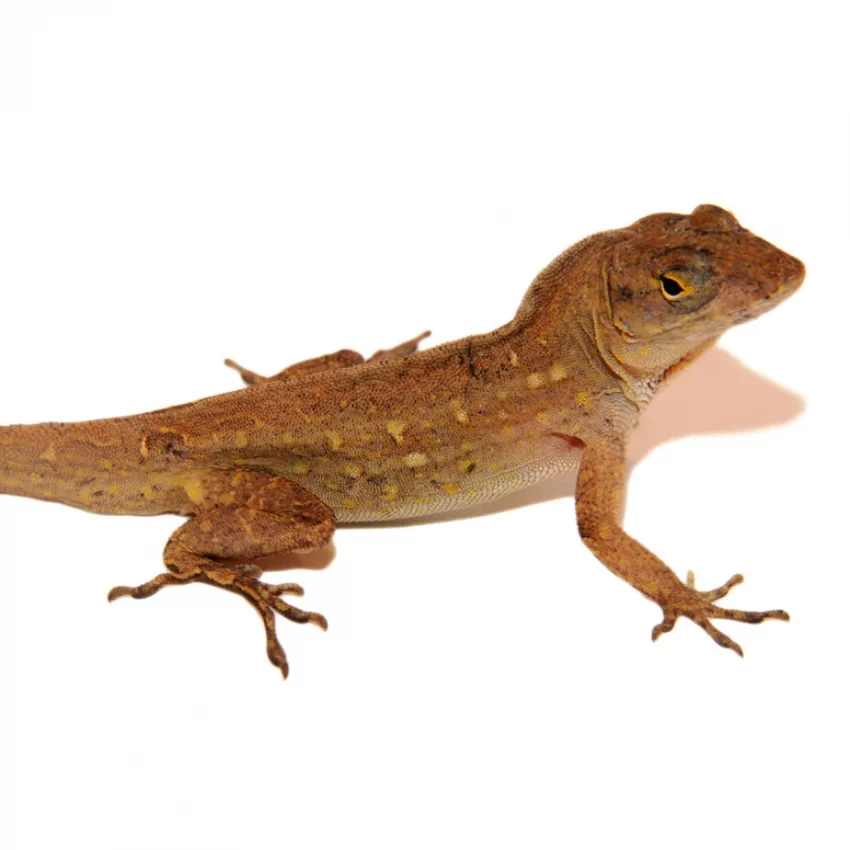Crested anoles are found in neotropical areas of Puerto Rico (including Vieques and Culebra), the Caribbean islands of Anegada, Tortola, Virgin Gorda, Jost Van Dyke, St. John, and St. Thomas. It is also considered an introduced species in Florida, the Dominican Republic, and Costa Rica. It is not known precisely when the species was introduced to these areas, but it is widely believed that Anola crostata was introduced to La Romana (Dominican Republic) before 1920.
Habitat
This is a perching species commonly found in arboreal habitats. Males in particular, use tree trunks to make their presence known to other animals. Because they are often found close to the ground, they are called ground-roosting species. They may also roost on walls and fences. Walls and fences are usually in more open areas and are advantageous for finding prey and being seen by intruders in their territory. For this reason, crested serpent eagles are often found in urban and suburban areas.
Crested Serpent Eagle
The body length ranges from 10 to 20.5 cm. Because of the species’ long tail, the SVL (snout-vent length) is usually only 7.5 cm for males and 5.7 cm for females. Females are much smaller than males. The young of this species is about 5.08 cm. Males are gray to light brown in color and may have a crest on their tails. Males can also communicate with each other by extending their dewlap (skin valve) below the neck. The color of the dewlap varies from yellow to red and may be lighter or darker depending on the humidity of the habitat. Females are opaque, matching the ground color, and have a dark stripe with a light border on their back. Young males also display this dorsal stripe until maturity. Females lack a tail comb and guttation. This species can change color depending on the environment, lighting, and mood.
Development
Not much is known about the specific development of crested anoles. Anolis species tend to grow faster in males than in females in many cases. At maturity, this difference in growth rate leads to sexual dimorphism. Males resemble females when they are young and do not have a well-developed guttation. This structure and dorsal crest develop over time in males.

Reproduction
Males regularly mate with females in their territory. Males approach females to mate and perform a variety of displays. Head banging, flexing, and gutturals. When the female recognizes the male’s display, she bows her head in response. When the male moves onto the female, the female bends her neck, and the male bites it. He then brings his tail close to the female and inserts his parts into the female’s vulva. However, the female may reject the male’s mating invitation before then, in which case she runs away without bending her neck.
Egg production in crested ibises is seasonal, with reduced activity during the cold and dry seasons. Female crested anoles lay one or two eggs under logs or rock piles every two weeks. Usually, when the female finds a place to lay her eggs, she bumps them with the tip of her nose. After this action, she will dig with her paws. Once in the hole, the female will push them further inside and cover them with soil. This species also participates in communal egg-laying, where several females use the same nest to lay eggs. The average incubation period is 50 days.
Life Span/Lifespan
There is little information about the lifespan of crested anoles in the wild or in captivity. However, several other anolis species have been reported to have an average lifespan of about 7 years in captivity. The lifespan of anole lizards is strongly correlated with the number of predators with which they share a habitat.

